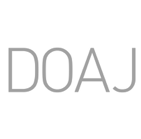Journal of Integrative Environmental Sciences Q1 Unclaimed
Journal of Integrative Environmental Sciences is a journal indexed in SJR in Environmental Science (miscellaneous) and Public Health, Environmental and Occupational Health with an H index of 34. It is an CC BY-NC Journal with a Double blind peer review review system, and It has a price of 847 €. The scope of the journal is focused on energy, climate change, pollution, sustainability, environmental management, conservation. It has an SJR impact factor of 0,824 and it has a best quartile of Q1. It is published in English. It has an SJR impact factor of 0,824.
Type: Journal
Type of Copyright: CC BY-NC
Languages: English
Open Access Policy: Open Access
Type of publications:
Publication frecuency: -



847 €
Inmediate OANPD
Embargoed OA- €
Non OAMetrics
0,824
SJR Impact factor34
H Index7
Total Docs (Last Year)40
Total Docs (3 years)292
Total Refs171
Total Cites (3 years)40
Citable Docs (3 years)4.39
Cites/Doc (2 years)41.71
Ref/DocOther journals with similar parameters
Nature Climate Change Q1
Annual Review of Environment and Resources Q1
Applied Catalysis B: Environmental Q1
Global Change Biology Q1
Environment International Q1
Compare this journals
Aims and Scope
Best articles by citations
Changes in soil CH4fluxes from the conversion of tropical peat swamp forests: a meta-analysis
View moreMulti-level climate governance and the role of the subnational level
View moreLegitimacy and empowerment: combining two conceptual approaches for explaining forest owners' willingness to cooperate in nature conservation
View moreWorking across boundaries: science-policy interfaces and international forest politics
View moreCan thermal soil remediation be sustainable? A case study of the environmental merit of the remediation of a site contaminated by a light non-aqueous phase liquid (LNAPL)
View morePublic and Private in Natural Resource Governance. A False Dichotomy?
View moreThe Lorax complex: deep ecology, ecocentrism and exclusion
View moreFrom sponsor to partner: NGO-business alliances that support nature conservation in the Netherlands
View moreOpening up the societal debate on climate engineering: how newspaper frames are changing
View moreThe scale of transition: an integrated study of the performance of CHP biomass plants in the Netherlands
View moreRole of poverty in fuel choice and exposure to indoor air pollution in Pakistan
View moreAmbivalence in calculating the future: the case of re-engineering the world
View moreA dynamic impact assessment method for rainstorm waterlogging using land-use data
View moreGermany's energy transition policy between national targets and decentralized responsibilities
View moreWhy Fukushima is a moral issue? The need for an ethic for the future in the debate about the future of nuclear energy
View moreGoverning the Environment: Salient Institutional Issues
View moreAn evaluation of farmers' willingness to pay for efficient irrigation for sustainable usage of resources: the GAP-Harran Plain case, Turkey
View moreTraditional knowledge in international forest policy: contested meanings and divergent discourses
View moreEnvironmental water requirements: demand management in an era of water scarcity
View moreEconomic analysis of the long-term effects of groundwater salinity: bringing the farmer's perspectives into policy
View moreDoes the population issue still have a valid place on the environmental agenda?
View moreMethane emissions from gas engines driving combined heat and power installations
View moreThe genetic diversity and cultural importance of cassava and its contribution to tropical forest sustainability
View moreDialogue as nuclear waste management policy: can a Swedish transparency programme legitimise a final decision on spent nuclear fuel?
View more
Comments